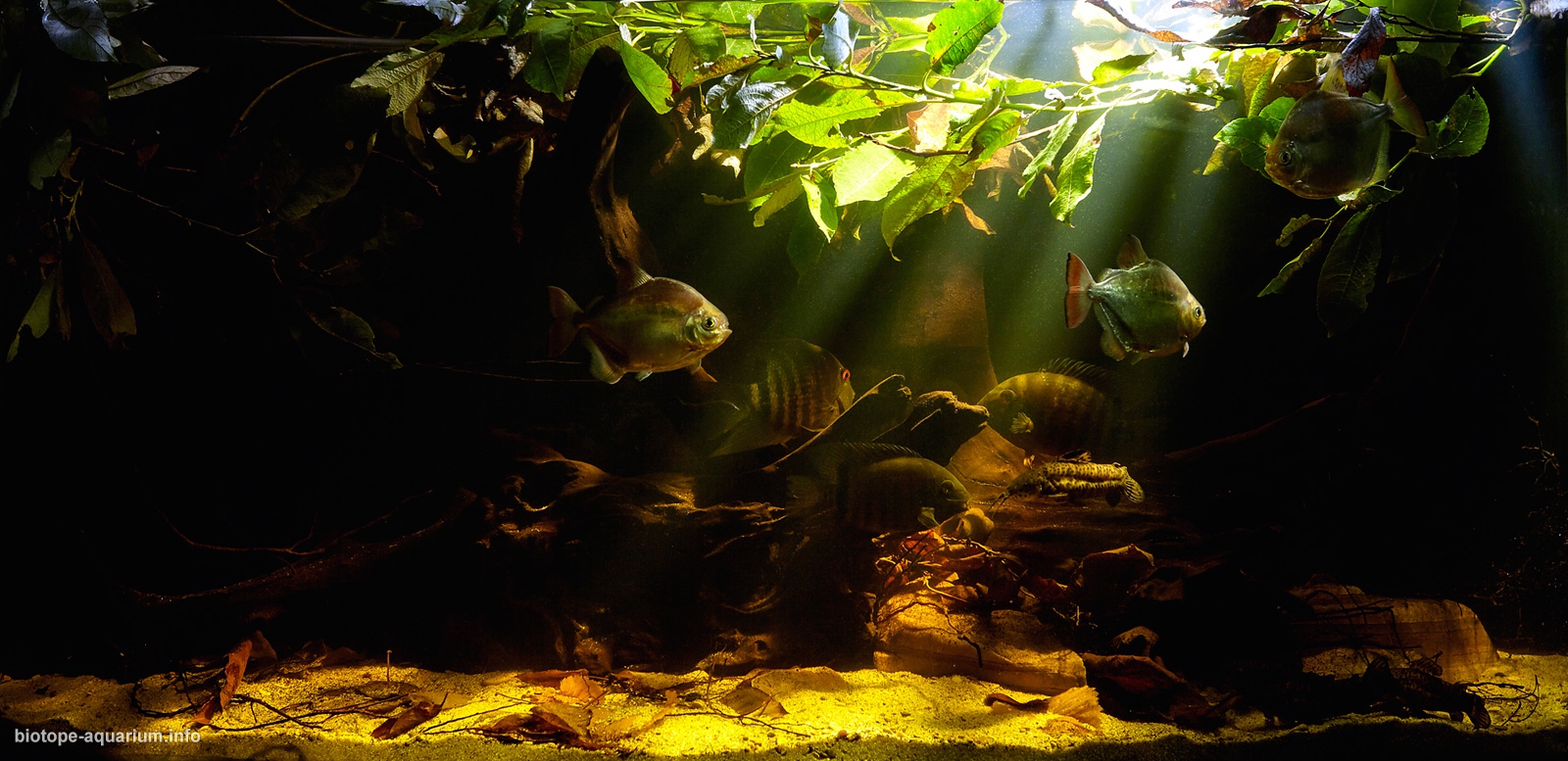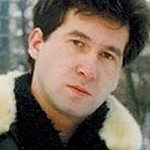Quiet backwater of the Essequibo River in Kurupukari District, Guyana
51st place in Biotope Aquarium Design Contest 2018
![]() Russia. Svetlana Kirillova
Russia. Svetlana Kirillova

Volume: 400 L
Dimensions: 130х53х64 cm
List of fishes: Heros severus, Metynnis argenteus, Megalechis thoracata
List of plants: N/A. At the time of the shooting photos, branches of trees with green leaves were placed into the aquarium to indicate the period of high water when the forests surrounding the rivers are flooded.
Description of decorations: Light river sand, light stones, large mangrove driftwood, thin birch roots, leaf litter, alder branches with green leaves.
Description of equipment: JBL CristalProfi e1501 filter, JBL ProTemp S 200 W heater, AQUAEL OXYBOOST 300 plus air pump, Tetra Tetronic LED Proline lamp.
Water parameters: Temperature is 25°С, рН is 6.5, КН is 3, GH is 6.
INFORMATION ABOUT BIOTOPE
Description of the area surrounding the biotope: Essequibo is the largest river of Guyana, its length is 1,000 km. It originates at the confluence of the Sipu and Chodicor rivers on the northern slopes of the Acarai Range in the south of the country. It flows to the north through wet forests and savannahs. There are numerous waterfalls on the river, one of which is Kurupukari waterfall. In the middle and lower reaches there are islands. When flowing into the Atlantic Ocean 21 km north of Georgetown, it forms an estuary up to 20 km wide with numerous islands. The climate is hot and humid, with two rainy seasons: from April to August and from November to January. The flora and fauna of the tropical rainforests of Guyana are very rich, the same can be said about the fauna of the rivers: many species of fish live here, many of which are kept in aquaria.
Description of the underwater landscape of the biotope: The bottom is covered with fine sand, sometimes silted. Since this part of the river is located in the forest zone, at the bottom there are debris of branches and leaves. During the flood period, the water rises, and the trees growing along the banks are partially flooded. Because of the fairly rapid flow, aquatic vegetation is scarce, it can be found only in the coastal zone, in relatively shallow water, or in backwaters.
Description of the parameters of the habitat: The water of the river, depending on the season, may be more turbid or transparent, with a brownish hue. Parameters of the water in the nature biotope: pH is 5.0-6.5, hardness is 0.5-1 dGH, KH is 0.
List of fishes and invertebrates occurring in the nature biotope: Arapaima gigas, Pygocentrus nattereri, Hemigrammus erythrozonus, Carnegiella strigata, Corydoras aeneus, Heros severus, Metynnis argenteus, Hoplosternum thoracatum.
List of plants found in the nature biotope: Echinodorus grisebachii, Echinodorus bolivianus, Cabomba furcata, Eleocharis acicularis.
Sources of information:
http://www.fishbase.org/summary/Heros-severus.html
http://biotopfish.com/species/heros-severus-cihlazoma-severum
http://www.fishbase.org/summary/Metynnis-argenteus.html
http://biotopfish.com/species/megalechis-thoracata-torakatum
http://www.fishbase.org/summary/Megalechis-thoracata.html
http://www.fishbase.org/museum/OccurrencesList.php?genus=Megalechis&species=thoracata
http://www.fishbase.org/museum/OccurrencesList.php?genus=Metynnis&species=argenteus
http://www.fishbase.org/museum/OccurrencesList.php?genus=Heros&species=severus
http://aquafisher.org.ua/cichlidae-yuzhnoy-ameriki/rod-heros-2/
https://hasta-pronto.ru/reki/esequibo/
Comments of the members of the jury of Biotope Aquarium Design Contest 2018

I liked this work because I don’t have to guess what part of the river the author was trying to represent. Even without reading the description, you can immediately determine that this is a shady part of the rainforest.

Nice light infiltration, interesting combination of fish. But I would have like to see this combination in a way bigger tank with larger group of Metynnis argenteus.
